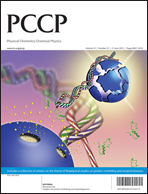Electric-double-layer field-effect transistors with ionic liquids
Abstract
Charge carrier control is a key issue in the development of electronic functions of semiconductive materials. Beyond the simple enhancement of conductivity, high charge carrier accumulation can realize various phenomena, such as chemical reaction, phase transition, magnetic ordering, and superconductivity. Electric double layers (EDLs), formed at solid–electrolyte interfaces, induce extremely large electric fields. This results in a high charge carrier accumulation in the solid, much more effectively than solid dielectric materials. In the present review, we describe recent developments in the field-effect transistors (FETs) with gate dielectrics of ionic liquids, which have attracted much attention due to their wide electrochemical windows, low vapor pressures, and high chemical and physical stability. We explain the capacitance effects of ionic liquids, and describe the various combinations of ionic liquids and organic and inorganic semiconductors that are used to achieve such effects as high transistor performance, insulator–metal transitions, superconductivity, and ferromagnetism, in addition to the applications of the ionic-liquid EDL-FETs in logic devices. We discuss the factors controlling the mobility and threshold voltage in these types of FETs, and show the ionic liquid dependence of the transistor performance.


 Please wait while we load your content...
Please wait while we load your content...